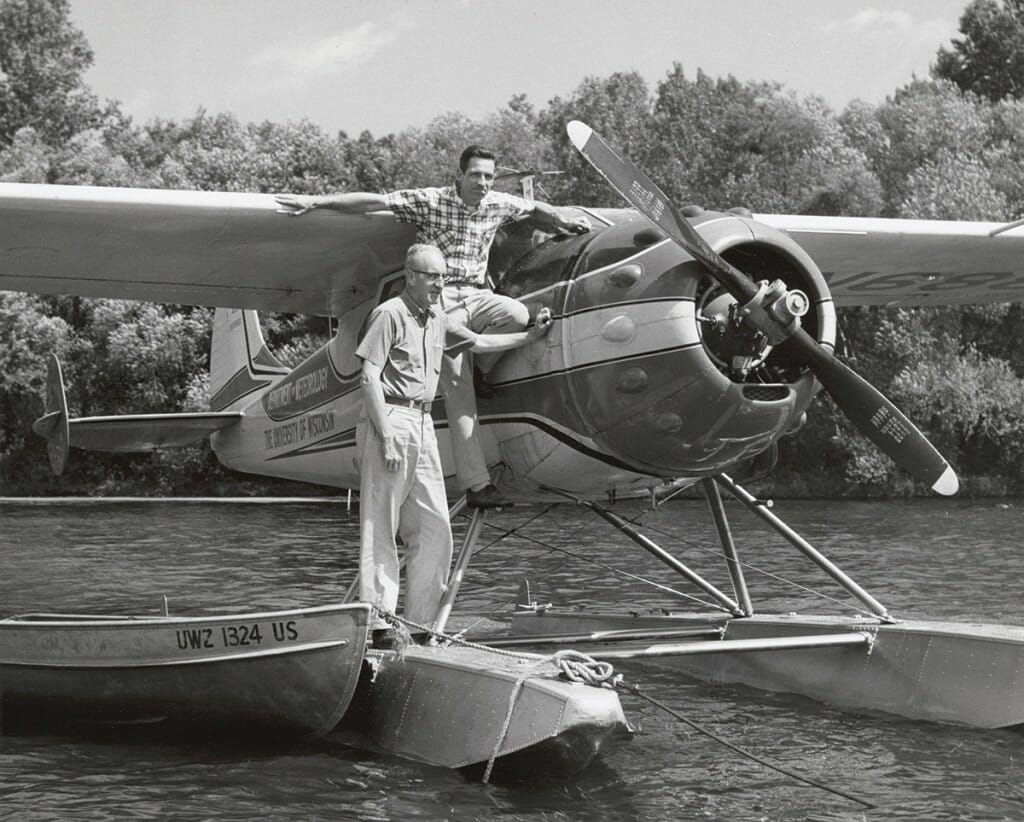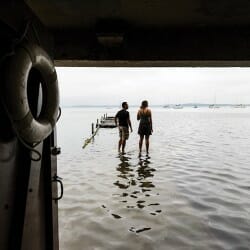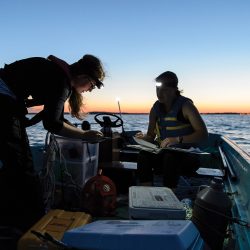
Arthur Hasler (shown here, front, with Robert Ragotzkie PhD’53 on the UW’s meteorology plane on Lake Mendota) changed the way we study waterways by getting out of the lab and onto the lakes. UW Archives S16374
A pioneer in the study of freshwater ecology, Arthur Hasler PhD’37 carried on the University of Wisconsin traditions of curiosity and conservation for four decades, discovering new ways to conduct research and pushing to protect our natural resources.
A key figure in advancing the study of limnology at the university, Hasler influenced how we study aquatic ecosystems, pollution control, and wildlife management around the world.
Hasler arrived in Madison in 1932 to study under Chancey Juday, pioneer of lake science research along with E. A. Birge. He took a few sabbaticals after earning his PhD in zoology, serving as an analyst with the Air Force Strategic Bombing Survey in Germany in 1945 and returning a decade later as a Fulbright Research Scholar.
He was promoted to full professor of zoology in 1948 and turned the university into a world-renowned hub for aquatic research.
Diverging from the beliefs of predecessors Birge and Juday, Hasler hypothesized freshwater ecosystems are heavily influenced by their surroundings, from plants to pollution, known as cultural eutrophication. His studies informed widespread efforts to curb soil erosion and sewage and fertilizer contamination.
In one famous experiment, Hasler introduced a better way to study aquatic ecosystems by building a barrier between Michigan’s Peter and Paul Lakes, creating control and test environments in which to study aquatic life. This method is used today to study acid rain, pollution, and invasion by exotic species.
Hasler is best known for his findings on how salmon spawn. While hiking near his childhood home in Utah, he was struck by the way familiar smells trigger memories, and he wondered if salmon were similarly compelled to spawn where they were born — a phenomenon known as olfactory imprinting. His discovery influenced salmon management strategies around the world.
In 1958, the National Science Foundation granted Hasler funds to build a working research station on Lake Mendota. The Laboratory of Limnology opened in 1963 and was renamed the Hasler Laboratory of Limnology in 2005.
After retiring in 1978, Hasler served as professor emeritus of limnology and maintained close ties to the university until his death in 2001.
Published in the Spring 2020 issue



Comments
No comments posted yet.